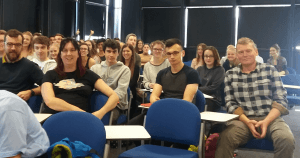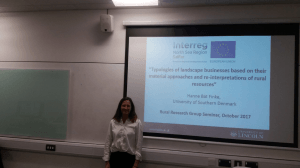This week the OECD is hosting a rural policy conference in Edinburgh on rural innovation. In part, this event will be examining its policy note “Rural Policy 3.0 – A framework from Rural Development”
The Policy Note includes a number of very welcome points about the diversity of rural areas and the differences between regions within Functional Urban Areas (FUAs), those close to FUAs and those that are more remote. This is particularly important when we see that rural regions within 1 hour of a major urban centre are performing significantly better in terms of productivity and proved to be more resilient to the economic turmoil of the past decade. Aligned to this, the policy also recognises that “the fundamental economic structure of a low-density economy and its growth opportunities follow a considerably different logic than is the case in urbanised regions” (p22). In other words, to capture the true potential of rural places policy must do more than just “rural proofing”.
Translating this into recommendations for action is more challenging and, according to the OECD, “requires new ways of thinking about: rural areas, their opportunities and challenges, and the role of national governments in supporting their development efforts” (p22). Moving away from the presumption that all rural regions are alike demands a more nuanced set of policies and objectives that can deliver a “broader well-being agenda” based not solely on competitiveness but on enhancing the social, economic and environmental well-being of rural areas. The assumption is that delivering against these objectives locally and regionally will in turn increase the contribution of rural regions to national performance.
However, while this is a welcome contribution to debates on rural futures, there is still considerable work to do to translate the ideas in Rural Policy 3.0 into practical tools and actions. I would also argue that the Policy Note overlooks one or two salient developments in rural areas and retains too much of a negative stance, exemplified by a summary of the differences between urban and rural economies that once again portrays the disadvantages associated with distance to markets, weaker competitiveness and more constrained economic structures.
Written throughout the document is the assumption that rural population ageing is bad for rural areas based primarily on the resultant labour market thinness (the Policy Note appears to assume that older people are less talented – p5) and increasing demands for costly public services – which could be translated into increasing business opportunities. There is no recognition of the economic contribution of older people which a number of researchers have identifies in terms of increased consumption power, participation in social enterprises and new venture creation. Furthermore, the trend of counterurbanisation among the “younger-old” and “middle-aged” groups in society is enhancing economic well-being in a number of rural areas and more should be done to understand these population dynamics and their rural economy impacts.
The second key omission revolves around the rapid advances in digital technologies and ICT. While there are a few passing references, there is seemingly no realisation of the extent to which the new technological revolution could dramatically change rural lives. From robotic agriculture to home-based healthcare and from driverless cars to drone-delivery retail systems, the future is full of technological uncertainties but advocates for rural areas such as the authors of this Policy Note need to be championing rural areas as the test-beds for many of these innovations.
A final concern with the Policy Note revolves around the assumption that “rural regions will need to continue to specialise and focus on core area of advantage to compete in the global economy” (p5). On p19, the Policy Note suggests that the emphasis should not be on predetermined “Strategic Sectors” but on understanding the strengths and assets of rural areas that can foster the emergence of new activities – apparently contradicting the earlier quotation.
I fear that too much specialisation can be a liability for a region without the critical mass of more urban regions that can absorb a negative shock to the dominant sector. Furthermore, this assumption raises the ever-present question in rural economies “are we focuses on the workers or the workplaces?” Those successful rural regions closer to bigger cities are exporters of high quality labour employed in a multitude of skilled professions. The scope for new enterprise in these regions is often linked to growing urban-rural interdependencies and networks and is therefore highly unlikely to focus around one or two specialised sectors. I would like to see more weight given to the view that adding value to unique “immobile assets” (p19) in rural areas can be the basis for differentiated rural development. These immobile assets are increasingly the social and cultural capitals that attract skilled people to live in rural places, not just natural resources. Such an approach captures population dynamics and multiple representations of rural places as well as physical and infrastructural factors and, most importantly, begins to turn the conversation towards what rural regions HAVE and not what they lack.
For additional reading on how rural areas can capture economic potential from dynamic interactions with urban regions, see Bosworth & Venhorst (2018) “Economic linkages between urban and rural regions what’s in it for the Rural?” Regional Studies; https://www.tandfonline.com/doi/full/10.1080/00343404.2017.1339868.

